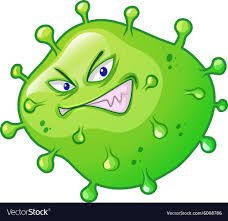Putting Bacteria to Work
In medicine, agriculture, and environmental research, microbes or microorganisms play essential roles in various biological, ecological, and industrial processes. They are employed, for instance, in the pharmaceutical industry to create medicines like vaccines and antibiotics. Growing plants, warding off pests and illnesses, and breaking down organic debris in the soil are all ways that microorganisms help farmers increase their harvests. Enzymes, biofuels, and other compounds are fermented using microbes in biotechnology (Fasim et al., 2021). They are also used to make biodegradable plastics, which are gaining popularity for their ability to cut down on trash and pollution caused by traditional plastics. The fermentation of foods and beverages, including cheese, yogurt, and beer, relies on microorganisms to break down complex chemical components into simpler ones (Kour et al., 2019). Using microorganisms in biological wastewater treatment systems to degrade organic matter and remove

Microbes in Water and Sewage Treatment Plants
Water is one of the essential resources on Earth, and water quality is critical to public health and the environment. Unfortunately, water sources are often contaminated with pollutants, including organic and inorganic materials, pathogens, and chemicals, which pose a significant risk to human and environmental health. To address this issue, water treatment plants use various methods to remove contaminants from water, and microorganisms play a crucial role in this process (Saeed et al., 2022). In waste management, microbes are used in water and sewage treatment plants to break down organic pollutants and convert them into harmless substances such as water and carbon dioxide. This process is crucial for maintaining our waterways' cleanliness and preserving our ecosystems' health.
Microorganisms are naturally present in water and can help break down organic matter and other pollutants. Wastewater treatment plants use microorganisms to remove organic matter and nutrients from sewage, making the water safe to release into the environment. In wastewater treatment, microorganisms convert organic matter into carbon dioxide, water, and other harmless compounds (Wu et al., 2019). These microorganisms are mainly bacteria, but other microbes such as fungi, protozoa, and viruses also play a role in the process .
The activated sludge process is a well-known Wastewater treatment method. In this process, wastewater is aerated in a reactor tank, allowing microorganisms to grow and form flocs or clumps. The flocs are then separated from the wastewater and returned to the reactor to continue treating the water. The activated sludge process can remove up to 90% of organic pollutants from wastewater and is widely used in many cities worldwide (Fariq et al., 2020).
Another wastewater treatment process that utilizes microbes is anaerobic digestion, where organic matter is broken down without oxygen, producing biogas. Biogas is a renewable energy source. In anaerobic digestion, microorganisms such as bacteria and archaea convert organic matter into biogas. The biogas is then used to generate electricity or heat, reducing the reliance on fossil fuels (Forsythe, 2020).
What's Your Reaction?












